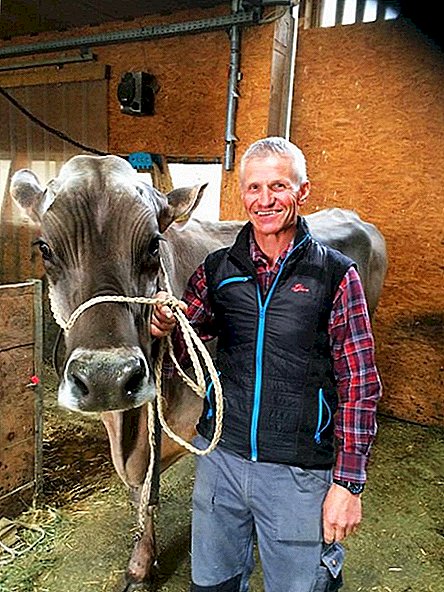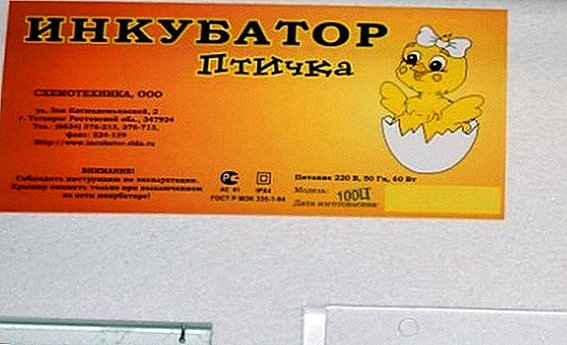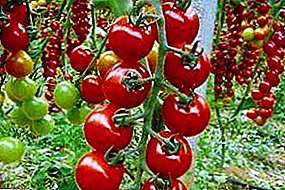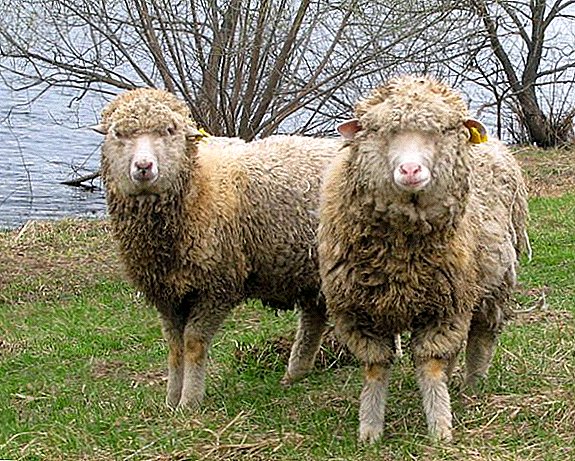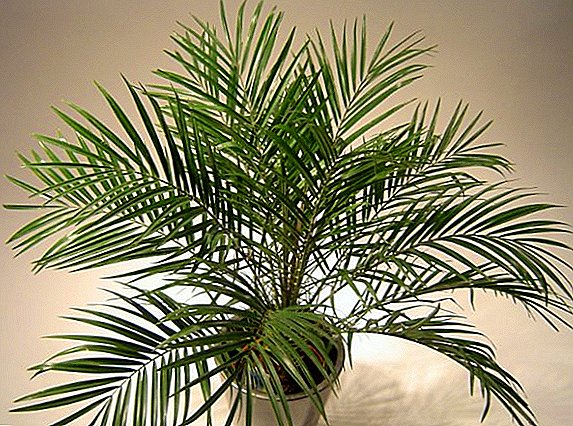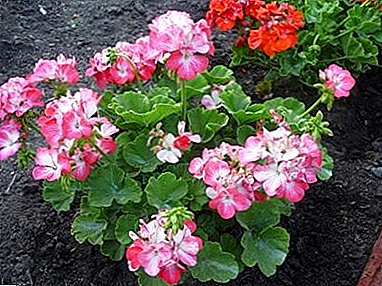
Zone Pelargonium is a popular flower that is able to lift the mood with its decorative look and long flowering. It is grown on the windowsill, although some growers practice cultivation of plants in open ground. In the care of the flower is not capricious, but certain conditions must be observed. Let's take a closer look at how to grow a flower and properly care for it.
Botanical description, history and cost of seeds
Zone Pelargonium is a herbaceous perennial, originally from hot South Africa. For several centuries it has been actively decorating many houses. For the first time, pelargonium was brought to Europe in the 17th century, after which it received wide demand in landscape design for decorating windows.
The following advantages of zonal pelargonium can be distinguished:
- unpretentious care;
- long flowering;
- beautiful form of buds;
- fragrant aroma.
It is possible to purchase seeds of zonal pelargonium in Moscow at a price of 31-120 rubles, depending on the variety.
Description of appearance and features
Zone pelargonium has the following features:
- Height. Bush grows to 0.5 m.
- Crown. It lends itself to the formation, so that the plant can be grown in the form of a bush or tree.
- Leaves. They are rounded, and on their surface are visible circles in the form of a horseshoe or donut.
- Bloom. Zone pelargonium blooms for a long time - from spring to autumn. There are varieties that, with proper care, can bloom throughout the year. All flowers are collected in large inflorescences. Their color can be different: white, red, pink, purple and two-tone. On petals there may be various spots, strokes or contrasting edges.
The best varieties of this type and photo
Scarlet Chandelier
This variety is one of the most common. It is a perennial crop that is actively grown at home. Feature varieties in large colors juicy-red color. The diameter of the buds in the expanded form is 2.5 cm.

Tuscany
This is a dwarf plant, in which the bush during flowering is covered with snow-white buds. Inflorescences resemble hats in shape.and the bush itself is surrounded by round-shaped dark green foliage.

Terry
This variety has terry petals. Their color can be very different: crimson, lilac, red, pale salmon.
Learn about the features of the care and reproduction and care terry pelargonium, as well as see the description and photos of varieties, here.

Where and how to plant?
The process of planting pelargonium zone is simple, if you properly prepare the soil, pot and choose a suitable place.
Lighting and location
In order for the plant to actively grow, form a lush green crown and bloom profusely, it needs bright lighting for 4-8 hours a day. Best suited south side. In the hot season will have to take care of shadingto avoid sunburn. In summer, the temperature regime should be 20-23 degrees during the day, and at night - 12-15 degrees.
In the cold season it is better to keep the flower at a temperature of 12-20 degrees. During flowering geranium must be protected from drafts and from contact with cold glasses on the windows.
Soil requirements
In the second case, it is necessary to take the usual garden soil and combine with river sand in equal proportions. In addition, it is necessary to take care of drainage using expanded clay.
Home care
- Watering. It is necessary to water crops regularly and moderately. If the soil is too wet, the roots may start to rot, and if there is little water, the leaves wither and turn yellow. Moisten the soil only after the top layer has dried.
In winter, irrigation is carried out once every 2 weeks. The plant does not need spraying, as it is tolerant of air humidity, and water droplets on the leaves will lead to the formation of ugly blotchiness. In winter, the air in the apartment is dry, so it is advisable to place the plant on a tray with expanded clay, which is moistened from time to time.
 Top dressing. Make the feeding is necessary during the flowering period, using complex formulations. In the composition of dressings should be present in high dosage of phosphorus and potassium, and in the reduced - nitrogen. It is not recommended to deposit food after a transplant, as you need to wait 1.5 months. In winter, fertilizers should be used no more than once every 4-5 weeks.
Top dressing. Make the feeding is necessary during the flowering period, using complex formulations. In the composition of dressings should be present in high dosage of phosphorus and potassium, and in the reduced - nitrogen. It is not recommended to deposit food after a transplant, as you need to wait 1.5 months. In winter, fertilizers should be used no more than once every 4-5 weeks.- Transfer. Zonal pelargonium grows very quickly, so from time to time it needs to be transplanted into a new container. For transplantation choose any time from spring to autumn. If you grow a plant in the open field, then it will have to be transplanted into a pot for the winter and put it in a room.
Young bushes transplanted into containers 1 size larger than the previous ones. Adult plants do not change the pots, but they use a new soil each time. It should include peat, loam, sand, perlite and charcoal.
- Pruning. The flowers are formed on the young shoots, so it is important to conduct pruning in time. This will allow the crown to form correctly. Otherwise, the plant will stretch and lose its decorative appearance. In the process of pruning is also necessary to remove damaged and dried shoots, leaves, which spoil the appearance of the flower. After the procedure, treat all cut sites with crushed activated carbon.
Common diseases and pests
The main pests of the zonal pelargonium are:
- spider mite;
- mealybug;
- aphid;
- thrips.
When they are detected, it is necessary to treat with insecticides:
- Aktara;
- Spark;
- Confidor.
As for the whitefly, which lays the larvae on the inside of the leaf, then to combat it, you must use a soap solution (40 g of soap and 1 liter of water). After processing the bush to cover it for 2 days with polyethylene.
From diseases the plant can be affected by the black leg.. This is a serious disease that occurs as a result of excessive watering and non-compliance with the temperature regime.
If the bushes formed a gray bloom on the leaf plate, and she herself became yellow with brown spots, then these are the symptoms of mold fungus. All affected leaves must be removed and then treated with fungicides.
Breeding features
Cuttings
 This method is the easiest and most popular. Cutting is a great option to rejuvenate the bush, while in the young plant all the varietal characteristics of the parent plant are preserved.
This method is the easiest and most popular. Cutting is a great option to rejuvenate the bush, while in the young plant all the varietal characteristics of the parent plant are preserved.
As the cuttings are often used shoots that remained from trimming plants. For cuttings fit tip of the shoot, a length of 5-15 cm with a leaf node. Cut stands below it at 0.5 cm below the node. Next, the breeding process is as follows:
- From a cutting, remove all the flowers and leaves that have been preserved on it.
- Cut the stalk a little dry for 2 hours in the air and root in water or soil consisting of peat and sand.
- Soil with cuttings to keep in a wet state, and as it dries, water. Already in 10-14 days the roots form.
- Strengthened plants are fed complex compounds, and after a while you can transplant them into a permanent pot.
Growing from seed
This method does not guarantee the preservation of varietal characteristics of plants.
It is necessary to plant the seeds at the end of winter, then by spring the sprouts will be able to gain strength and in the summer to please with lush flowering.
- The seeds of Pelargonium zone are large, have an oblong shape and a dense shell, so they must be prepared in advance. For this, it is necessary to perform stratification. The essence of the procedure is that the planting material is ground by sawing or emery, and then soaked in water at room temperature. This speeds up the germination procedure 10 times.
If the seed was purchased in a store, then no preparation is necessary.
- It is necessary to sow seeds into the soil, which consists of a mixture of peat and perlite. Previously, it is sterilized in the oven at 180 degrees for 20 minutes.
- After the seeds have been sown on the surface, they must be sprinkled with a layer of soil, which is 2 mm thick.
- To make the seeds better rooted, they need to be kept in diffused lighting, regularly watered with a spray bottle.
- The first shoots are formed after 2 weeks. Pick up seedlings in separate pots after 2-3 pairs of leaves appear on it.
Zone Pelargonium is a beautiful and fragrant plant that is suitable for home and outdoor cultivation, which means that if you follow all the rules of agricultural technology, the flower will bloom for a long time, never get sick and please with its beautiful view.


 Top dressing. Make the feeding is necessary during the flowering period, using complex formulations. In the composition of dressings should be present in high dosage of phosphorus and potassium, and in the reduced - nitrogen. It is not recommended to deposit food after a transplant, as you need to wait 1.5 months. In winter, fertilizers should be used no more than once every 4-5 weeks.
Top dressing. Make the feeding is necessary during the flowering period, using complex formulations. In the composition of dressings should be present in high dosage of phosphorus and potassium, and in the reduced - nitrogen. It is not recommended to deposit food after a transplant, as you need to wait 1.5 months. In winter, fertilizers should be used no more than once every 4-5 weeks.